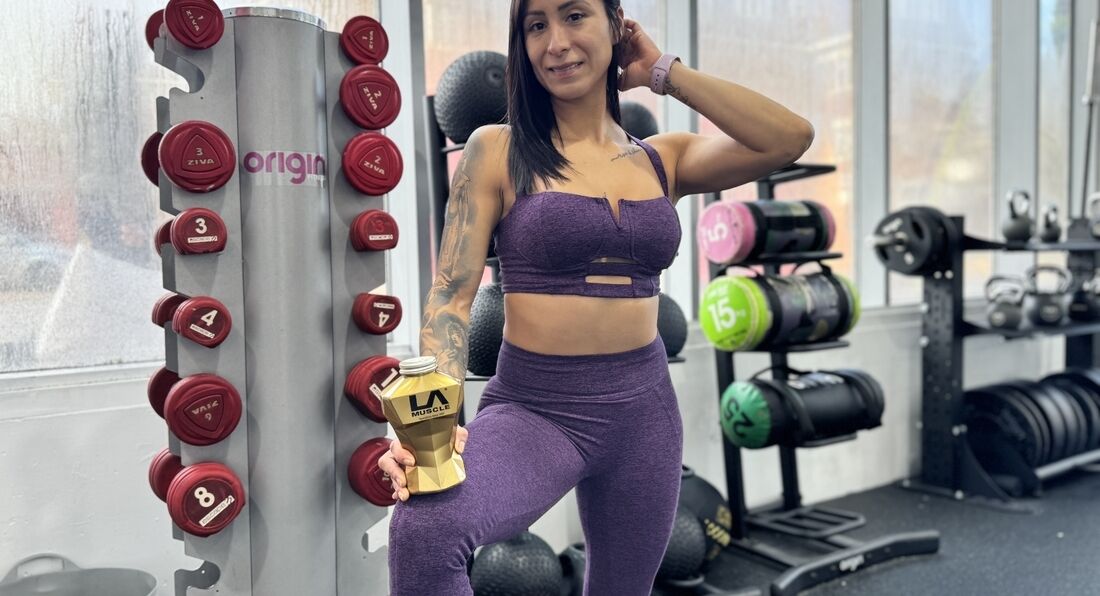The Knowledge > How To Build Muscle >
Friday, 6th March 2020
Work Your Butt Off!
Get Faster & More Visible Results
By Lina Geraci on 06.03.2020 09:26 am

With summer fast
approaching most of us are already worried about what our sweet derrières will
look like in a bikini…
We promise ourselves to work hard, lose weight, tighten up, tone…we hit the gym, we go crazy… but what exactly are we working at and how?
Ok, so we want to lift that butt and shape it up but how do we do that? Which are the muscles involved?
Well, let me tell you. Bikini or no bikini, summer or winter, your butt deserves and should get a good workout the whole year round and here is why. Rather than worrying about how good our butt looks in those tight jeans we should really understand the important role this muscle group plays in our everyday life.
The muscles we are talking about are the gluteal muscles (gluteus maximus, gluteus medius and gluteus minimus). The largest one, the gluteus maximus, is regarded as one of the strongest muscles in the human body and a powerful hip extensor. It is connected to the coccyx, or tailbone, as well as other surrounding bones. However, it also assists in femoral external rotation and abduction, as well as knee stabilization. The glute max is most active during force production with a flexed knee, for example, when rising from a seated or squat position and when climbing stairs. The gluteus maximus is generally inactive when standing and walking. Examples of isolation exercises include glute bridges and box reaches. Examples of complex exercises include squats, deadlifts, bulgarian split squats and lunges.
The gluteus medius and minimus play an important role in injury prevention because they are the primary stabilizers of the pelvis. They also abduct and externally rotate the femur. Examples of isolation exercises include clamshells, lateral leg raises. Examples of complex exercises include single-leg box squats and lateral lunges.
My clients will probably tell you how l am always asking them to engage their glutes or squeeze that butt. I make sure the glutes are worked out at every session whether it’s with lunges or squats, lateral lunges or box jumps, glute bridges or walking side squats. The reason I do that is because the glutes are often overlooked or ignored in training terms and therefore become weak and inhibited.
The gluteus maximus allows us to keep an upright position needed for bipedalism. With evolution the gluteus maximus enlarged in humans to assist in stabilising the trunk while standing and counteract the high impact forces that tend to flex the trunk anteriorly during running and sprinting. Modern lifestyle sees us chair bound most of the day, consequently the glute muscles gradually lose tone. People that spend many hours seated tend to have tight, overactive hip flexors and lengthened, inhibited glutes. If left unchecked, this imbalance is often the root of lower back, hip and knee pain. This can be prevented by including hip flexor stretching and mobilization combined with glute motor control and strengthening exercises in your training programs keeping your body healthy and functional. Glute training is extremely important in the prevention of lower back, hip and knee dysfunction. If you’re not sure which exercises will serve this purpose, be sure to include single-leg exercises in all of your programs as they will develop all three of the glute muscles.
The Gluteus Maximus and Lower Back Stability
Activating and strengthening the glutes needs to form an important part of your core routine. As some of the fibres of the gluteus maximus are continuous with the fibres of the erector spinae, any contraction in the gluteus maximus will contract the muscles of the erector spinae as well providing stability and strength. Gluteus Maximus contraction also generates a pull on the lower end of the thoraco-lumbar fascia, this is a thick layer of ligamentous connective tissue positioned at the lower back. Tightening of this fascia stabilises the vertebras. People with low back pain often have weak and deconditioned glutes. It becomes very obvious how working out all three muscles that form the gluteus group is extremely important, not just to look good and draw a crowd (I just thought to throw that one in!) but most importantly for the health, stability and strength of our lower back and lower body in general.
Here are some exercises to fire those glutes back into action.
Gluteus Maximus
- Glute Bridges
- Box Reaches
- Squats
- Deadlifts
- DB Bulgarian Split Squat
- DB Lunges
Gluteus Medius and Minimus
- Clamshells
- Lateral Leg Raises
- Single-Leg Box Squat
- DB Lateral Lunges
What are you waiting for? Let’s work our butts off!!






























